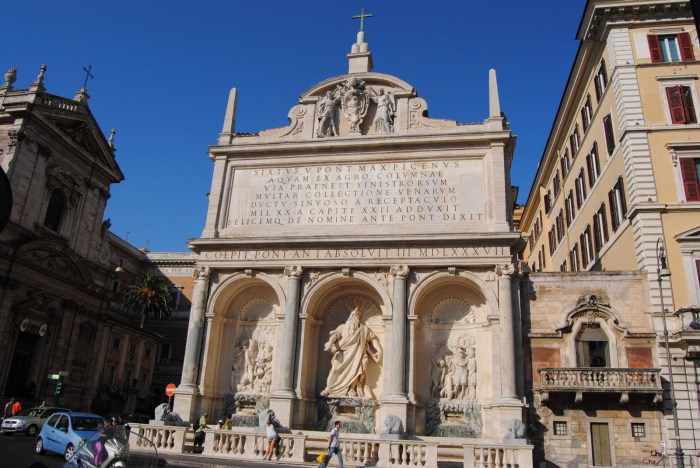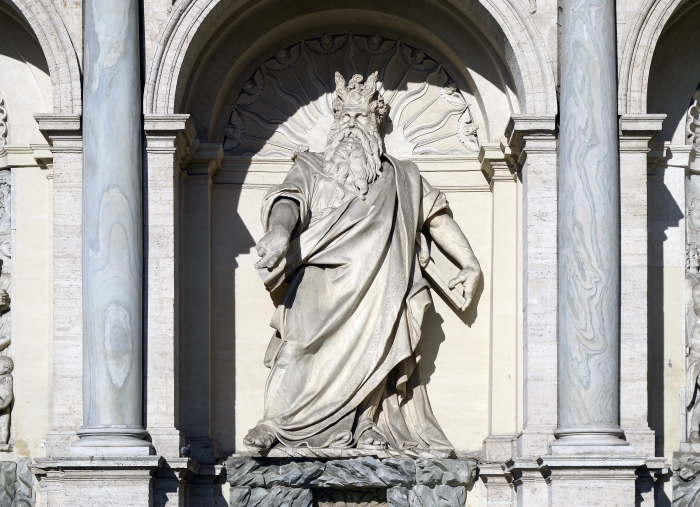(By: Sophia Van Zonneveld)
Fountain Fun Facts
- TITLE: FONTANA DEL MOSE ~ FONTANA DELL’ACQUA FELICE
- ARCHITECT: DOMINICO FONTANA
- LOCATION: QUIRINALE DISTRICT OF ROME
- DATE: 16TH CENTURY (1587-88)

In the 15th century, fountains and extravagant waterworks systems were built in Papal Rome. Rome, with a rise in population, prided itself in new architectural innovations. The Tiber River was the major water source needed for general use. Aside from the high demand for water that the growing population required, the popes wanted to be credited for their part in the renewal of the city. Furthermore, popes resurrected aqueducts to power new fountains.
More specifically, under the rule of Pope Sixtus V, the ancient aqueduct, Aqua Alexandriana was commissioned to service the papal residents and their grounds. Matteo Bartolani attempted to design this new Acqua Felice system (included Moses Fountain) but miscalculated the water flow. Therefore, Domenico Fontana took over and successfully added springs to help strengthen the streams of water to the fountain.
The fornices (arches) surrounding the three separate sections were inspirational to the design of the fountain. The writing above the niches applauds Pope Sixtus V. The left niche was titled: Joseph lets the Jews cross the dried up Jordan River (by Flaminio Vacca and Pier Paolo Olivieri), and the right niche was titled: Aaron leads the Jews to drink (by Giovan Battista Della Porta). Moses is featured in the center niche of the fountain, which is named after him. Leonardo Sormani and Prospero Bresciano (the architects of the Moses statue), along with other architects and designers, overlooked the unity of the fountain. This caused disproportion between the side niches and the center niche of Moses.

The fountain as a whole reminds the viewer of God’s powerful hand in nature. However, when the fountain is analyzed in context with the rise in papal power, a person’s changes their interpretation. Moses’ stern expression and strong stance create an intimidating effect on the viewer. Furthermore, the seemingly “biblical” figures transform into the papacy, which controlled the Church and city of Rome.
After all, the popes’ agenda during the Counter-Reformation, during the 16th century, was to promote power and wealth of Catholicism. The Church of Rome, because of the potency of Protestantism, had to maintain power by intimidation and control. The objective was to provide people with necessities, like water, in a way that reminded men of the power of the pope.
The Fountain of Moses is one of the many reconstructed fountains in Papal Rome (from 15th century to the late 1800s) that displayed the Catholic marks of: divine triumph and intricacy through its art.
————————————————————————–
Source
Venturi, Francesco, and Mario Sanfilippo. “Papal Rome.” Fountains of Rome. New York, NY: Vendome, 1996. 39-42. Print.

